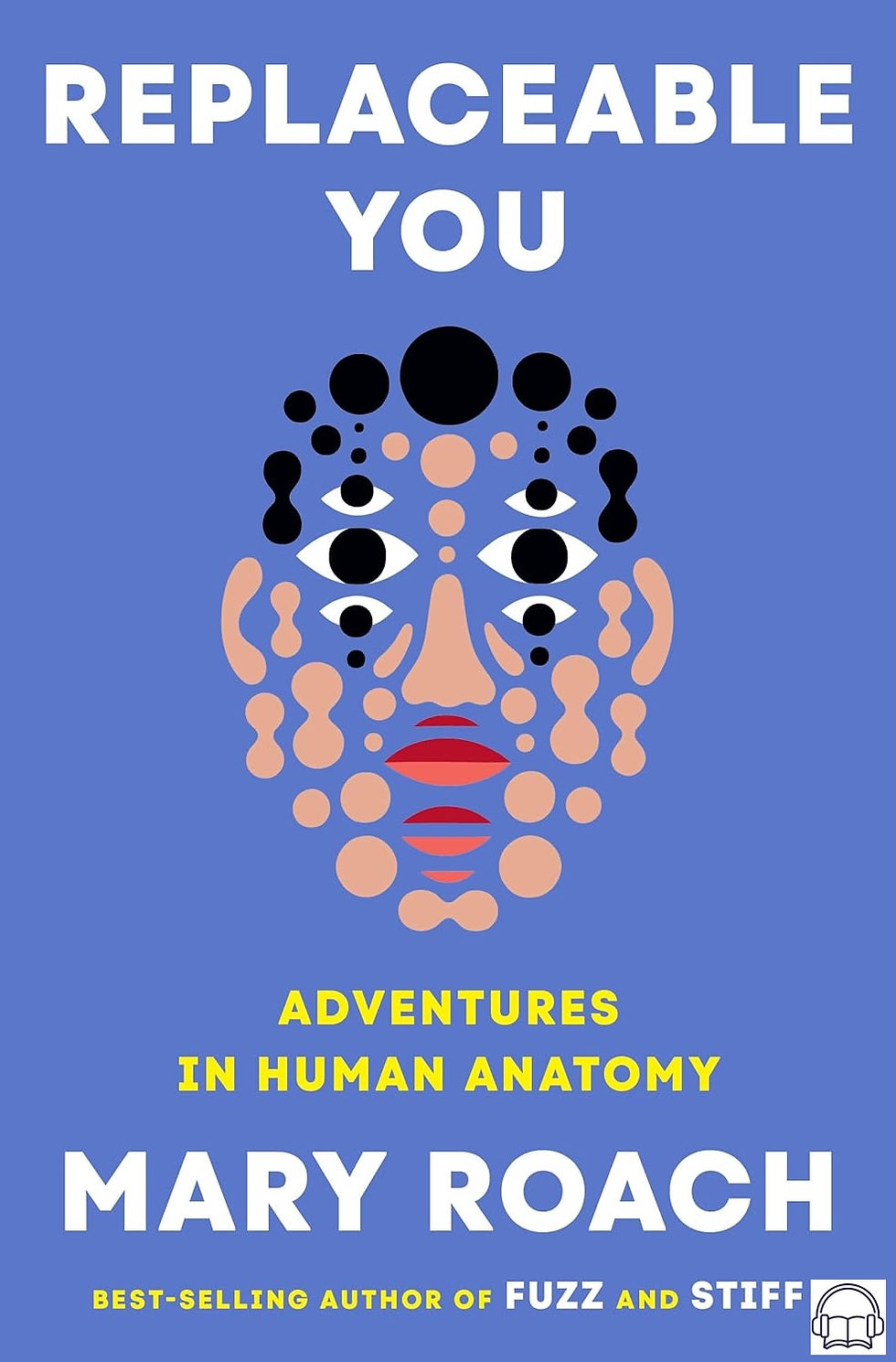Replaceable You
- Greg Barlin

- Oct 28
- 2 min read
by Mary Roach ★★★★☆

Mary Roach is back with her signature blend of wit and indefatigable desire to delve deeply into an unusual topic. This time, that topic is the human body, and all of the potential ways over history we, as humans, have attempted to augment, replace, or modify it. Roach covers pretty much the entire body, from the tips of hair transplants to the base of prosthetic feet.
There's a tongue-in-cheek quality to the writing, as there is in all of her books. It's non-fiction, and it's informative, but we get to have fun while we're learning interesting things. Roach has no compunctions about putting herself in uncomfortable places or situations, whether it's traveling to Georgia (the country, not the state) to see if she can talk to the surgeon who pioneered penis replacement surgery using the patient's middle finger, or integrating herself into surgical environments to see the subject matter of her book first-hand. In researching heart transplants, she had this passage to share from the operating room:
"Wyeth doesn’t offer his hand for a handshake, because it is underneath a beating heart. He’s detaching it from its moorings inside the chest. In almost every way, from the neatly arranged instrument tray to the vital-signs monitor overhead, this is a textbook surgical scene. The obvious difference is the inch and a half of pink snout peeking out from under the surgical drapes. Pigs are used for this work because their hearts approximate ours. I understand if you feel bad for them. Your heart goes out to them, I almost typed, then stopped. Because really it’s the other way around."
You can see the subtle humor. I chuckled and chortled regularly, and even laughed out loud a few times.
The book is entertaining and informative, and at times even a bit nauseating. But Roach's humor keeps it light, and her persistence in uncovering information (and typically doing so in person) helps imbue the book with a relatability that might not be present in something more academically focused. There's a lot of content in relatively few pages; I'm more informed on a variety of topics after having read it, and being able to collect that knowledge while laughing along the way is what has made Roach so successful writing these types of books.
In the end, no matter how hard we try, the human body regularly wins, whether it's attacking replacement parts it sees as a threat or just being so unique in its development that even with all of the technological advances in science, there are some things we can't get close to recreating. "You can replace many of your original parts, and the replacements will improve in time, as they have already, in astonishing ways," writes Roach. "But the pieces science builds—and grows and prints and scavenges—won’t ever quite equal the ones we start out with. That’s not a complaint, or a condemnation or belittlement of the progress that’s been made. It’s just me saying something we all know but regularly lose sight of. The body’s all-day, everyday achievements...these are the real miracles. That’s where the gee-whiz belongs."



Comments